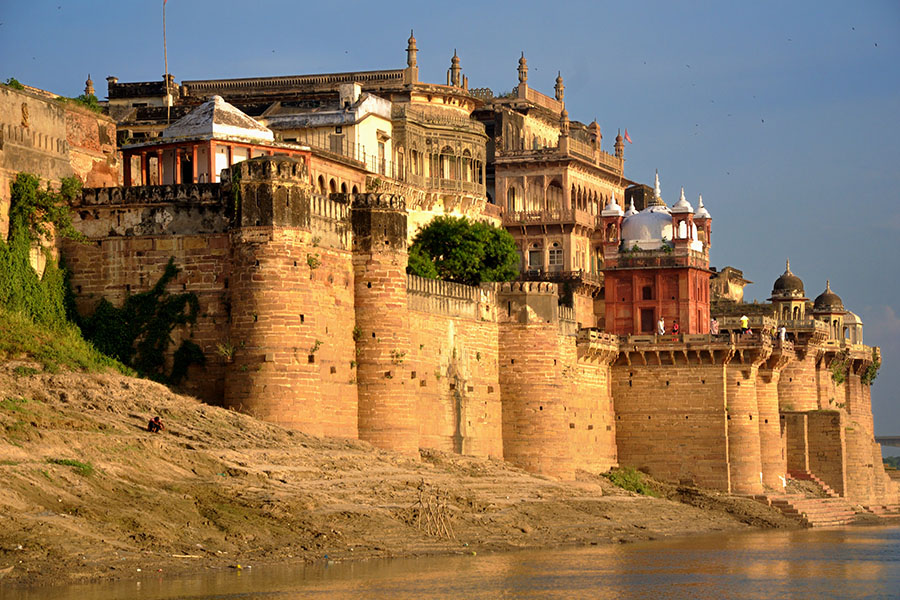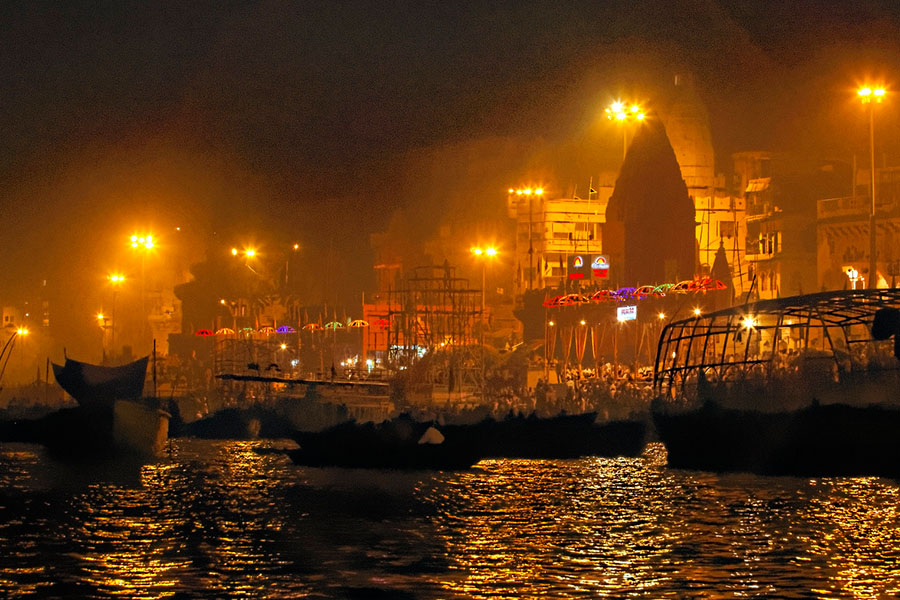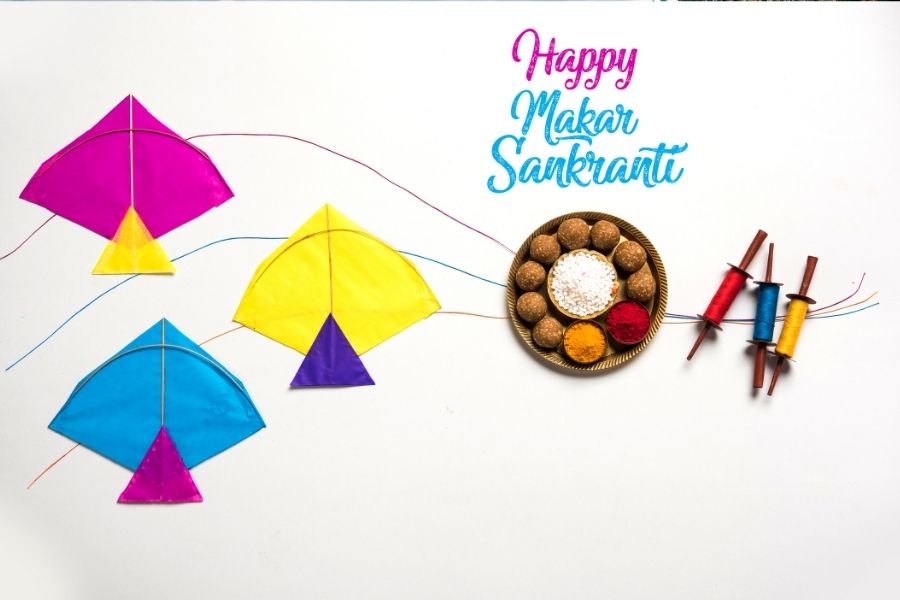Top Tourist Places in Varanasi – Explore Ghats of Varanasi

Varanasi, often referred to as the spiritual heart of India, captivates visitors with its rich tapestry of history, culture, and spirituality. This ancient city, situated on the banks of the sacred Ganges River, offers a plethora of attractions ranging from magnificent temples to vibrant markets. Let’s delve into the must-visit Tourist Places in Varanasi, each offering a unique glimpse into the city’s soul.
The Ghats of Varanasi

The ghats, or riverfront steps, are iconic symbols of Varanasi. Each ghat holds its own significance, whether for religious rituals, daily life, or stunning views.
Dashashwamedh Ghat

As the most prominent and busiest ghat, Dashashwamedh Ghat serves as the heart of Varanasi’s spiritual activities. Legend has it that Lord Brahma performed a grand ritual here, giving the ghat its name. The evening Ganga Aarti, a mesmerizing ritual involving fire, chanting, and music, draws visitors and devotees alike. The ghat offers an unparalleled view of the river and the city’s skyline, making it a perfect spot for photography and spiritual reflection.
Assi Ghat
Located at the confluence of the Ganges and Assi rivers, Assi Ghat is a popular destination for both locals and tourists. This ghat offers a more tranquil experience compared to the bustling Dashashwamedh Ghat. Visitors can partake in morning yoga sessions, attend cultural performances, or simply enjoy the serene ambiance. Assi Ghat is also an excellent spot to witness the first rays of the sun illuminating the Ganges.
Manikarnika Ghat
Manikarnika Ghat holds profound spiritual significance as one of the main cremation ghats in Varanasi. According to Hindu beliefs, those who are cremated here attain moksha, or liberation from the cycle of rebirth. The constant activity at this ghat, with funeral pyres burning day and night, offers a powerful reminder of the transient nature of life. While visiting, it’s important to approach with respect and understanding of the local customs.
Harishchandra Ghat
Harishchandra Ghat is another key cremation site in Varanasi. Named after the legendary King Harishchandra, who is said to have worked here as a cremator, this ghat is steeped in mythological significance. It is believed that cremation at Harishchandra Ghat leads to salvation, similar to Manikarnika Ghat. Visitors can observe the rituals and gain a deeper understanding of Hindu beliefs surrounding death and the afterlife.
Kashi Vishwanath Temple – Major Tourist Places in Varanasi

The Kashi Vishwanath Temple stands as one of the most revered temples in India, dedicated to Lord Shiva, the presiding deity of Varanasi. This sacred site attracts millions of pilgrims and tourists each year.
History and Importance
The temple’s history spans several centuries, with references in ancient texts like the Skanda Purana. The current structure, rebuilt by the Maratha ruler Ahilyabai Holkar in 1780, has seen several reconstructions due to invasions. The Kashi Vishwanath Temple is considered one of the twelve Jyotirlingas, making it a central site for Shaiva devotees.
Architecture and Structure
The temple complex showcases stunning architecture, characterized by intricate carvings and a gold-plated spire. The sanctum sanctorum houses the main deity, Vishwanath, in the form of a lingam. Surrounding the main temple are smaller shrines dedicated to various deities, each contributing to the temple’s vibrant spiritual atmosphere.
Visiting Tips
Visitors should be aware of the temple’s security measures, including restricted access to certain areas. It’s advisable to visit early in the morning or late in the evening to avoid long queues. Dressing modestly and removing shoes before entering are required as a sign of respect.
Sarnath
Just a short distance from Varanasi, Sarnath holds immense importance in Buddhist history as the site where Lord Buddha delivered his first sermon after attaining enlightenment.
Historical Background
Sarnath’s history dates back to the 6th century BCE. The site features numerous stupas, monasteries, and archaeological ruins, all reflecting the teachings and spread of Buddhism. Emperor Ashoka, a significant patron of Buddhism, built several monuments here, including the iconic Ashoka Pillar.
Key Attractions: Dhamek Stupa, Ashoka Pillar

The Dhamek Stupa, a massive stone and brick structure, marks the spot where Buddha gave his first sermon. The stupa’s elaborate carvings and inscriptions offer a glimpse into the artistry of ancient India. The Ashoka Pillar, crowned with the Lion Capital (now India’s national emblem), symbolizes the spread of Dharma (righteousness).
Museums and Exhibitions
The Sarnath Archaeological Museum houses a vast collection of artifacts, sculptures, and relics, including the original Lion Capital. The museum provides an in-depth look at the art and culture of ancient India, particularly during the Mauryan and Gupta periods.
Mulagandha Kuti Vihara

This modern temple, built by the Mahabodhi Society, features exquisite frescoes depicting scenes from Buddha’s life. The temple’s peaceful surroundings and meditative atmosphere make it an ideal place for reflection and prayer.
Banaras Hindu University (BHU)

Banaras Hindu University, one of India’s most prestigious educational institutions, offers more than just academic excellence. The sprawling campus is a cultural and architectural landmark in Varanasi.
Campus Tour
The BHU campus is a blend of historical and modern architecture, set amidst lush greenery. Visitors can explore the well-maintained gardens, historical buildings, and various faculties that contribute to the university’s rich academic and cultural environment.
New Vishwanath Temple
The New Vishwanath Temple, located within the BHU campus, mirrors the architecture of the original Kashi Vishwanath Temple. Built in the 1960s, the temple serves as a serene space for worship and contemplation. The temple’s spacious design and beautiful marble work make it a must-visit site.
Bharat Kala Bhavan Museum

The Bharat Kala Bhavan Museum, situated within the BHU campus, boasts an impressive collection of Indian art, including paintings, sculptures, and textiles. The museum provides a comprehensive overview of India’s artistic heritage, making it a valuable resource for art enthusiasts and historians.
Ramnagar Fort

Ramnagar Fort, located on the eastern bank of the Ganges, offers a fascinating glimpse into the royal history of Varanasi.
Historical Significance
Built in the 18th century by Raja Balwant Singh, Ramnagar Fort served as the residence of the Maharaja of Varanasi. The fort’s architecture combines Mughal and Indian styles, with ornate balconies, courtyards, and pavilions.
Museum and Exhibits
The fort houses a museum featuring an eclectic collection of artifacts, including vintage cars, royal costumes, medieval weaponry, and manuscripts. The museum offers a unique insight into the lifestyle and heritage of the Varanasi royalty.
Best Time to Visit
The best time to visit Ramnagar Fort is during the winter months, from October to March, when the weather is pleasant. The fort also hosts the annual Ramnagar Ramlila, a traditional performance depicting the story of Lord Rama, which attracts visitors from all over the country.
Cultural Experiences in Varanasi
Varanasi, with its rich cultural heritage, offers a plethora of experiences that reflect India’s artistic traditions and spiritual depth.
Ganga Aarti

The Ganga Aarti, performed at Dashashwamedh Ghat, is a daily ritual that draws crowds of devotees and tourists. The ceremony involves priests chanting hymns, waving oil lamps, and offering prayers to the river, creating a mystical atmosphere. It’s an awe-inspiring spectacle that showcases the deep reverence the locals have for the Ganges.
Classical Music and Dance Performances
Varanasi has a deep connection with Indian classical music and dance. The city is home to many renowned musicians and hosts numerous concerts and festivals throughout the year. Attending a classical music or dance performance provides a window into the rich cultural traditions of India.
Local Cuisine
The culinary landscape of Varanasi is as diverse as its culture. From street food stalls to fine dining restaurants, the city offers a wide range of culinary delights. Be sure to try the famous Banarasi paan, a betel leaf preparation, along with kachoris, chaats, and traditional sweets like malaiyo and rabri.
Festivals Celebrated in Varanasi

Varanasi celebrates a variety of festivals with great enthusiasm. Diwali, the festival of lights, sees the city adorned with lamps and decorations, while Dev Deepawali, celebrated fifteen days after Diwali, illuminates the ghats with thousands of oil lamps. Other major festivals include Holi, the festival of colors, and Makar Sankranti, known for its vibrant kite-flying traditions.
Exploring Varanasi’s Markets
Varanasi’s markets are bustling hubs of activity, offering a wide range of products, from traditional crafts to modern goods.
Godowlia Market

Godowlia Market is a bustling hub in Varanasi, known for its vibrant atmosphere and diverse offerings. It’s an excellent place to experience the city’s local culture and shop for unique items.
Shopping Highlights
Godowlia Market offers everything from traditional Banarasi sarees to modern clothing, jewelry, and household items. The market’s narrow lanes are lined with shops selling handicrafts, brassware, and other local specialties. It’s the perfect place to buy souvenirs and gifts that capture the essence of Varanasi.
Bargaining Tips
Bargaining is a common practice in Godowlia Market. Don’t hesitate to negotiate prices, as it’s part of the shopping experience here. Politeness and a friendly attitude can go a long way in securing a good deal.
Vishwanath Gali
Vishwanath Gali, a narrow lane near the Kashi Vishwanath Temple, is famous for its array of shops selling religious items, sweets, and local crafts.
Religious Items and Souvenirs
The shops in Vishwanath Gali are filled with religious paraphernalia, including idols, incense, and prayer beads. It’s an ideal spot for picking up spiritual souvenirs and gifts.
Local Snacks and Sweets
Indulge in local snacks like kachori, samosa, and the famous Banarasi sweets, such as pedas and laddoos. The gali is also known for its lassi shops, offering refreshing yogurt-based drinks topped with a layer of malai (cream).
Thatheri Bazaar
Thatheri Bazaar is renowned for its brassware and copperware, showcasing the city’s traditional metalwork. The artisans here create beautifully crafted utensils, statues, and decorative pieces.
Unique Crafts
The bazaar’s unique offerings include intricately designed items that make perfect souvenirs or additions to home decor. Each piece reflects the skill and artistry of Varanasi’s craftsmen.
Shopping Tips
When purchasing items from Thatheri Bazaar, look for quality craftsmanship and authenticity. It’s a good idea to inquire about the making process and the cultural significance of the items.
Boat Rides on the Ganges

A boat ride on the Ganges is an essential experience in Varanasi. It provides a unique perspective of the city’s ghats and temples, offering a peaceful and scenic way to explore the area.
Sunrise and Sunset Cruises
The sunrise and sunset boat rides are particularly popular, providing stunning views of the ghats illuminated by the soft light of dawn or dusk. These cruises offer a serene and contemplative experience, perfect for capturing the beauty of Varanasi.
Photography Opportunities
The ghats, temples, and daily life along the river present excellent photography opportunities. From the vibrant scenes of pilgrims performing rituals to the tranquil waters of the Ganges, there’s no shortage of captivating moments to capture.
Guided Tours
For those interested in learning more about the history and culture of Varanasi, guided boat tours are available. Knowledgeable guides provide insights into the significance of the various sites along the river, enhancing the overall experience.
Alamgir Mosque

The Alamgir Mosque, also known as Beni Madhav ka Darera, is a historical mosque built by Mughal Emperor Aurangzeb.
Architectural Style
The mosque features a blend of Hindu and Islamic architectural elements, showcasing grand domes and minarets. The intricate carvings and designs reflect the diverse cultural history of Varanasi.
Historical Context
Built on the site of a former Vishnu temple, the Alamgir Mosque stands as a symbol of the city’s layered history. It offers a unique perspective on the cultural and religious amalgamation in Varanasi.
Visiting Tips
The mosque is open to visitors throughout the day. To fully appreciate the architecture, visit during daylight hours. Respectful attire and behavior are expected when visiting this religious site.
Temples and Shrines
Varanasi is home to numerous temples and shrines, each with its unique significance and charm.
Durga Temple

The Durga Temple, also known as the Monkey Temple, is dedicated to the goddess Durga. The temple is famous for its vibrant red color and the monkeys that inhabit the complex. It’s a lively and colorful site, offering a glimpse into the local worship practices.
Tulsi Manas Temple

Dedicated to Lord Rama, the Tulsi Manas Temple features beautiful marble carvings depicting scenes from the Ramayana. The temple’s peaceful environment makes it a great place for meditation and reflection.
Annapurna Temple

The Annapurna Temple, dedicated to the goddess of food, Annapurna, is an important place of worship in Varanasi. The temple is known for its charitable activities, including feeding the poor, and offers a warm and welcoming atmosphere to all visitors.
Sankat Mochan Hanuman Temple
The Sankat Mochan Hanuman Temple is a popular pilgrimage site dedicated to Lord Hanuman. Devotees believe that praying here can alleviate troubles and difficulties. The temple is also known for its large population of monkeys, which are considered sacred.
Bharat Mata Temple
The Bharat Mata Temple is unique in that it is dedicated to the concept of India as a nation rather than any particular deity.
Unique Features
The temple houses a large marble relief map of India, symbolizing the unity and diversity of the country. This unique feature makes the Bharat Mata Temple a must-visit for those interested in India’s cultural and geographical heritage.
Significance and Symbolism
The Bharat Mata Temple represents the motherland and national pride, attracting visitors who wish to pay homage to the country itself. The temple’s emphasis on unity and diversity makes it a symbol of India’s rich cultural tapestry.
Art and Craft of Varanasi
Varanasi is renowned for its traditional arts and crafts, which are perfect souvenirs.
Banarasi Silk Sarees

The Banarasi Silk Sarees are famous worldwide for their intricate designs and fine quality. These sarees, often adorned with gold and silver brocade, are a must-buy for visitors to Varanasi.
Wooden Toys and Sculptures
The city’s artisans are skilled in creating wooden toys and sculptures, often depicting mythological figures and animals. These items are not only beautiful but also reflect the rich cultural heritage of the region.
Brassware and Copperware
Varanasi’s brassware and copperware are known for their craftsmanship. These products, available in various forms, including utensils, statues, and decorative items, showcase the city’s traditional metalworking skills.
Local Culinary Delights
Varanasi’s culinary scene is as rich and diverse as its cultural heritage.
Street Food

The city’s street food is legendary, offering a variety of flavors and dishes. From the tangy chaat to the crispy kachori, Varanasi’s street food is a must-try for every foodie. The flavors are a true reflection of the city’s vibrant culture.
Traditional Sweets
Indulge in traditional sweets like malaiyo, a creamy dessert available only in the winter months, and the ever-popular rabri and jalebi. These sweets are a delicious way to experience the local culinary traditions.
Specialty Beverages
Varanasi is known for its special lassi, a yogurt-based drink that’s often topped with a thick layer of cream. Another unique beverage to try is thandai, a cold milk drink flavored with almonds, saffron, and other spices. Both are refreshing and flavorful.
Conclusion
Varanasi is a city that offers a rich tapestry of experiences, from spiritual journeys to cultural explorations. Whether you’re wandering through the bustling markets, witnessing the Ganga Aarti, or exploring the ancient temples, Varanasi leaves an indelible mark on the soul. The city’s blend of history, culture, and spirituality makes it a must-visit destination for travelers seeking a deeper connection with India’s heritage. So, pack your bags and embark on a journey to discover the timeless charm of this mystical city.
FAQs
- What is the best time to visit Varanasi?
- The best time to visit Varanasi is between October and March, when the weather is pleasant and ideal for sightseeing.
- How can I experience the Ganga Aarti in Varanasi?
- The Ganga Aarti can be experienced at Dashashwamedh Ghat every evening. Arrive early to secure a good viewing spot.
- What are the must-try dishes in Varanasi?
- Some must-try dishes include kachori, chaat, lassi, and malaiyo. The street food scene in Varanasi is vibrant and diverse.
- Are there any etiquette tips for visiting temples in Varanasi?
- When visiting temples, dress modestly, remove your shoes before entering, and be respectful of the local customs and practices.
- Is it safe to travel alone in Varanasi?
- Varanasi is generally safe for solo travelers, but it’s always best to stay alert and take common travel precautions.


